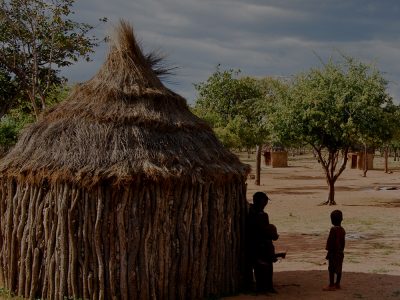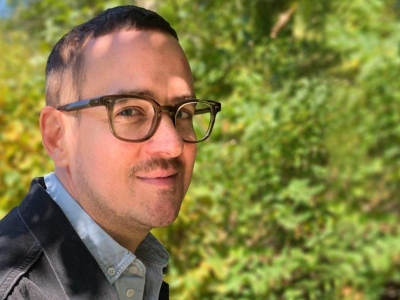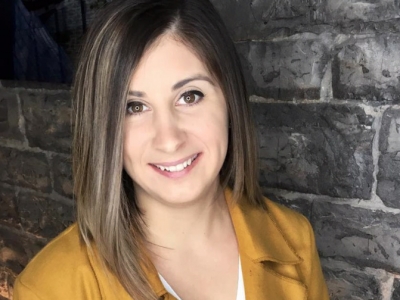By Mary Giles
The Government of Canada recently announced a plan to welcome 59,500 refugees and protected persons and 5,500 more immigrants on humanitarian and compassionate grounds in the next three years.
Today, 79.5 million people around the world have been forcibly displaced from their homes due to violence, persecution, conflict, climate change and human rights violations. According to the United Nations (UN) Refugee Agency, 51 percent of displaced persons are women and 40 percent are children.
The majority of the world’s 26 million refugees are women and girls. In the current pandemic, humanitarian aid organizations and health workers have been forced to suspend services for their own safety, leaving refugees to rely even more on their own resources.
The World Refugee & Migration Council (WRMC) has partnered with Global Independent Refugee Women Leaders (GIRWL), to address the unmet needs of refugee women and girls during COVID-19. Fen Hampson, chancellor’s professor in the Norman Paterson School of International Affairs (NPSIA), is the president of the WRMC.
Hampson says, “The plight of women and girls, who are disproportionately displaced — often in vulnerable situations — has become even more dire during the pandemic. The WRMC is collaborating with GIRWL to help develop a network through consultations with women in refugee camps and communities around the world. This bootstrap initiative has helped those with internet access to form better means of communication with each other to mobilize shared resources.”
In June, the WRMC and GIRWL hosted a virtual conference, Refugee Women: Responding to COVID-19. The project involves helping partners to develop global women’s refugee networks through online platforms that will allow the group to broaden its reach beyond local networks. It aims to support local women leaders and promote networks between women at local, national and global levels to encourage information and knowledge sharing.
Ghazal Zazai, a NPSIA graduate student, recently wrote a literature review published by the WRMC on the impact of COVID-19 on displaced populations. The review explores the social and gender inequalities revealed by the pandemic which are disproportionately affecting women and girls. Her work was supervised by Professor Val Percival who is also engaged in the work of the Council on COVID-19 as it affects refugee women’s health.
An International Call to Action
After serving for 10 years as director of NPSIA, Hampson joined the Centre for International Governance Innovation (CIGI) as director of the global security and politics program in 2012. Through this program, the World Refugee Council was established through discussions with fellows at CIGI, Carleton University, Amnesty International and the UN.
In January 2019, the Council (now WRMC) presented a report with 55 calls to action and recommendations to improve the lives of refugees. A Call to Action: Transforming the Global Refugee System is grounded in peer-reviewed research papers and reports on issues impacting displaced people and migrants. Hampson stressed the important role played by Carleton colleague Professor James Milner in supporting the research work of the Council.
Hampson says, “Although the report has garnered a lot of international attention, a major problem is that the fanfare when reports are produced eventually dies down and they often end up on the shelf, never to be heard from again.”
To keep the momentum going, the WRMC narrowed its focus to a few of the recommendations to create projects involving real-world action to ensure their implementation. The projects include strategies for refugees displaced by climate change, affordable housing for the displaced in Columbia, corporate social responsibility for refugee and migrant workers, repurposing the frozen assets of corrupt foreign officials to help refugees directly and resettling refugee survivors of torture in Canada.
As WRMC president, Hampson holds primary responsibility for keeping the projects moving forward. With a Council of 29 prominent leaders, each having different ideas and priorities with complex policy challenges, it can sometimes be difficult to keep the focus narrowed to achievable goals.
Hampson says the WRMC is not just an armchair exercise — Council members have met with national and local governments, civil society and most importantly, refugees in camps and communities around the world — in Jordan, Tanzania, Bangladesh, Uganda, Ethiopia, Colombia and Germany. He says, “The Council seeks to engage the voices of refugees themselves and to see not only the big picture, but the situation on the ground, to create recommendations that strengthen the international regime and come up with innovative solutions for chronically underfunded NGOs.”

African Youth Action Network (AYAN) food and non-food distribution in Kyaka II refugee settlement. Photo courtesy of Global Independent Refugee Women Leaders (GIRWL).
Social Media and Technology
On a personal level, as a result of the work Hampson did on international governance at CIGI as director of the Global Commission on Internet Governance, he is especially interested in the uses and abuses of new technology and social media in producing toxic narratives, but also its creative uses to help refugees.
Working in cooperation with Facebook, WRMC is developing a series of online, secure communication and engagement platforms for refugees. Refugees’ involvement ensures online tools meet local language requirements and social, economic and health needs. WhatsApp, for example, is an app that refugees can use to communicate securely with each other.
“Facebook is developing better ways to use its platforms to allow refugee women to set up chat sites to exchange secure information about best practices with COVID-19 and chronic diseases that are prevalent in their circumstances,” says Hampson. “They are also hosting webinars with refugee women. WRMC is trying to create concrete ways for platforms to enhance their capacity to strengthen existing social networks while empowering refugee women and girls.”
Hampson went to San Francisco to meet with various digital platform representatives such as Facebook, Techfugees, Uber and Airbnb, who are helping refugees with travel and housing.
He says, “The workshop focused on technology to support refugees. Perhaps the most significant technological barrier for refugees is the absence of an environment in which they can actually access the available technology in a secure way to ensure their privacy and security. Using various platforms as a trusted tool to build internal networks in refugee communities provides a way to give agency to displaced women.”
A Call to Action draws attention to the crucial need for secure platforms for communication and data. Information infiltrated by intelligence agencies from authoritarian regimes puts already-vulnerable refugees in more danger. This data protection needs to come from technology companies, but also from NGOs, international organizations and governments.
Turning Ideas into Action
Based on the recommendation to establish a global network for refugees in A Call to Action, the German government is partnering with the WRMC to set up a global women’s network to raise the visibility and voices of displaced women.
The Action Network on Forced Displacement – Women as Agents of Change held its launch on October 27. At the online event, Fen Hampson discussed the importance of the network to empower displaced women and girls and to provide them with the means to play a key role in rebuilding their own lives and the lives of those in their communities.
“When it comes to refugees, some countries are sharing an unequal load,” Hampson says. “Germany has accepted a million refugees in recent years, but many countries have been shirking their duties under the 1951 Refugee Convention. We need to find better ways to share the responsibility.”
Hampson is committed to turning ideas in action. He says, “It is vital that researchers continue to come up with innovative ideas founded on evidence-based research. Academics tend to offer suggestions, but we also need to follow through on those recommendations by creating supportive action-based networks. Combining research with advocacy ultimately helps to move the dial on concerted global action.”
Monday, November 9, 2020 in Another Take
Share: Twitter, Facebook



